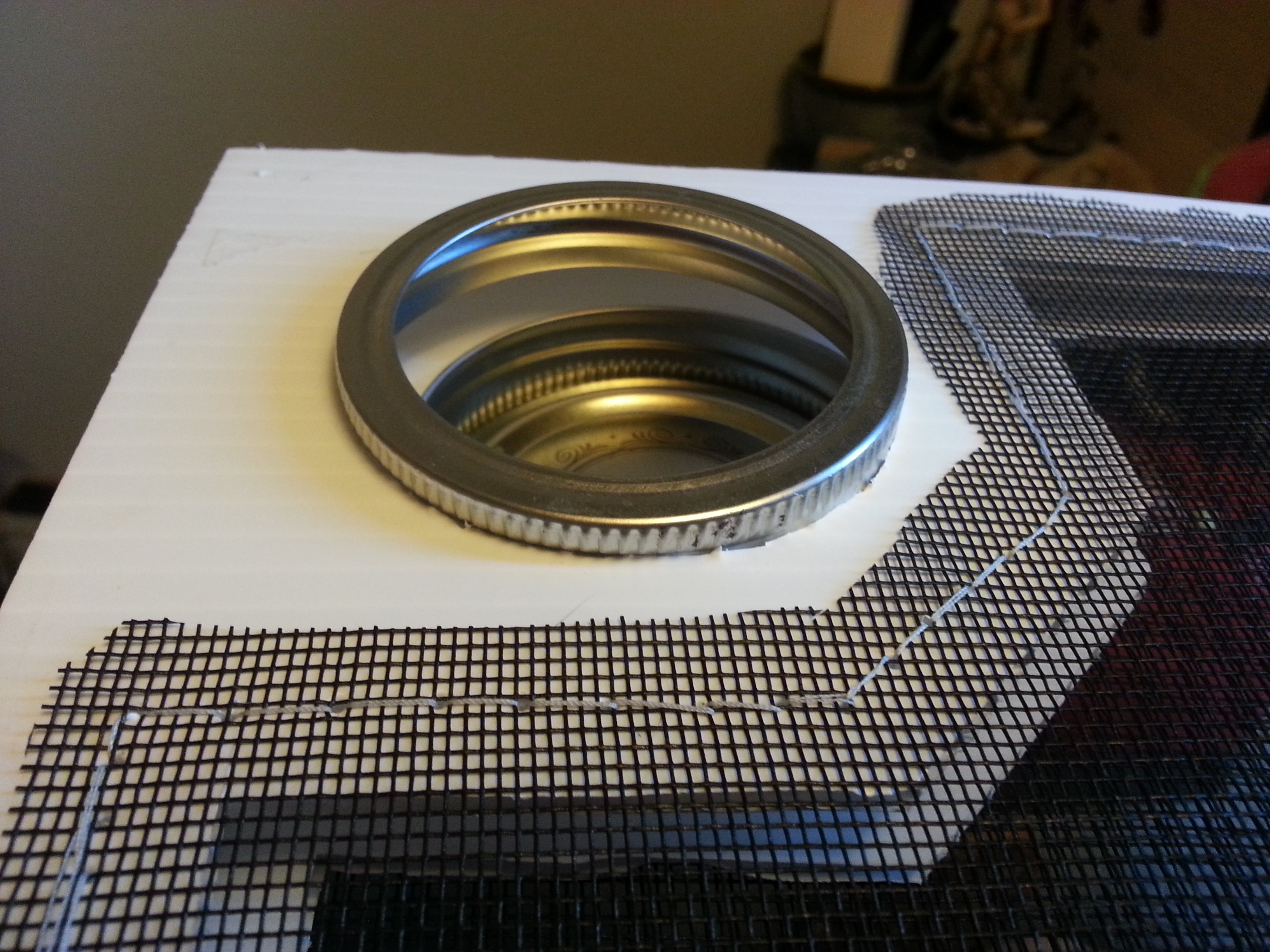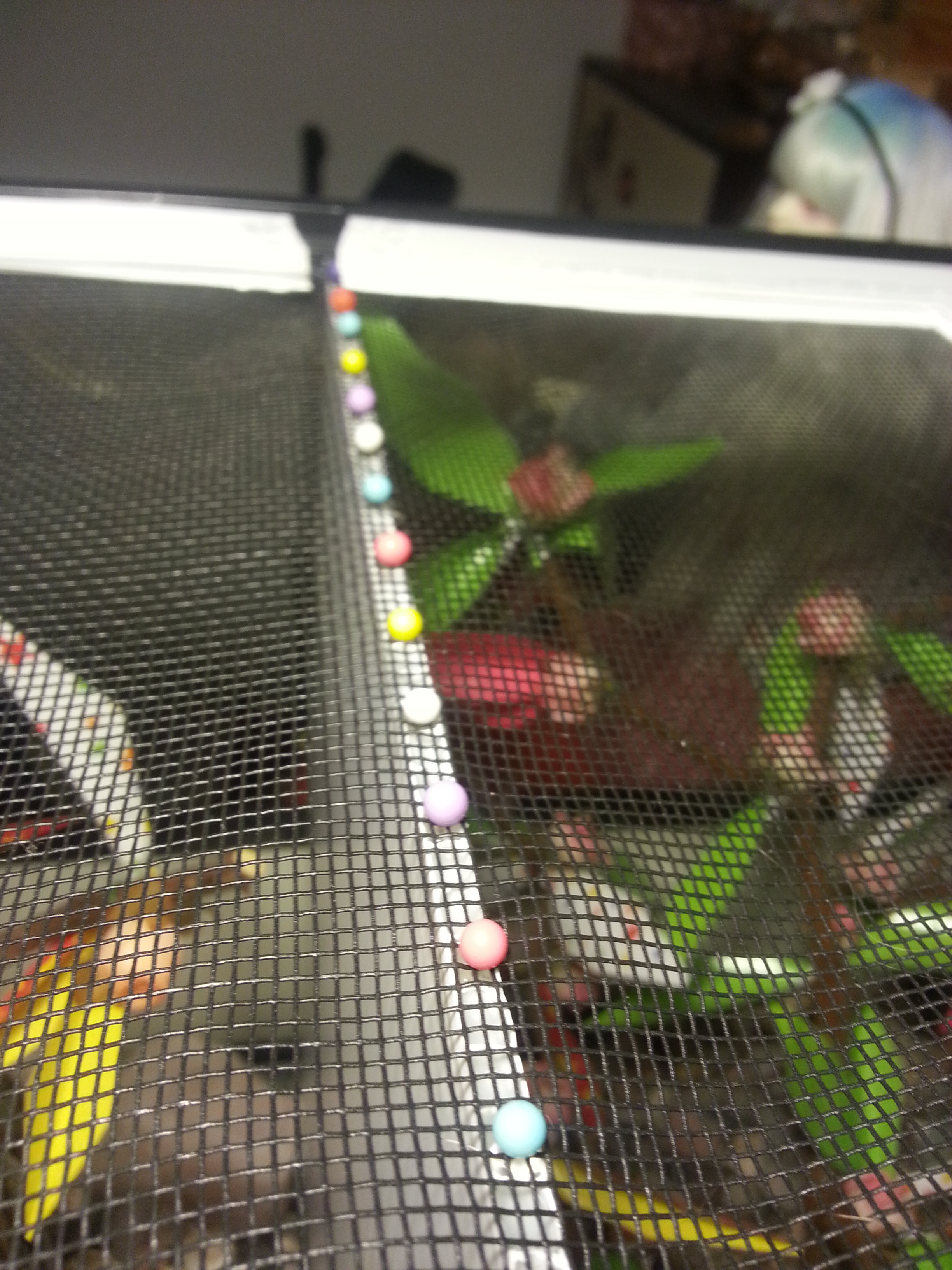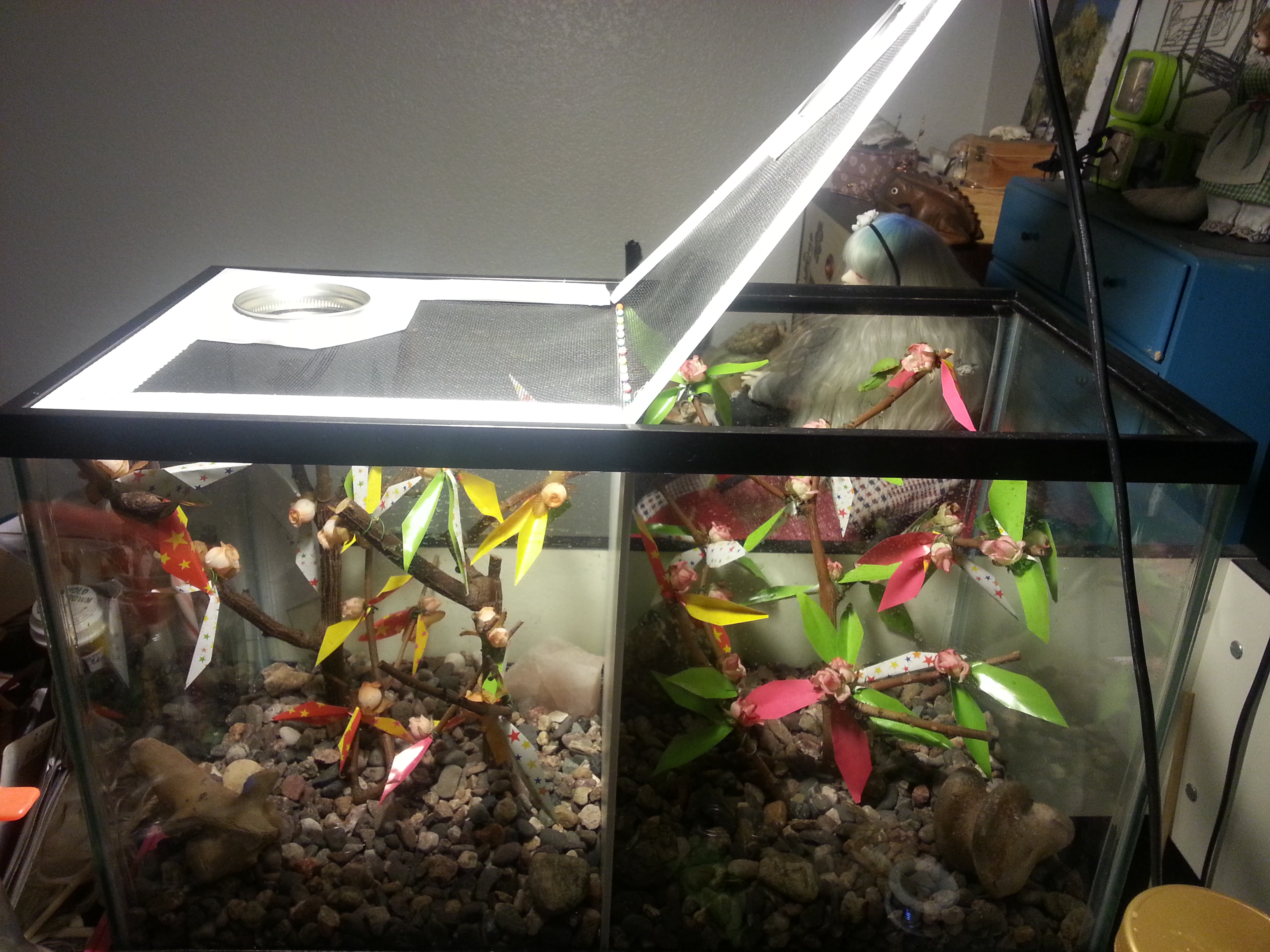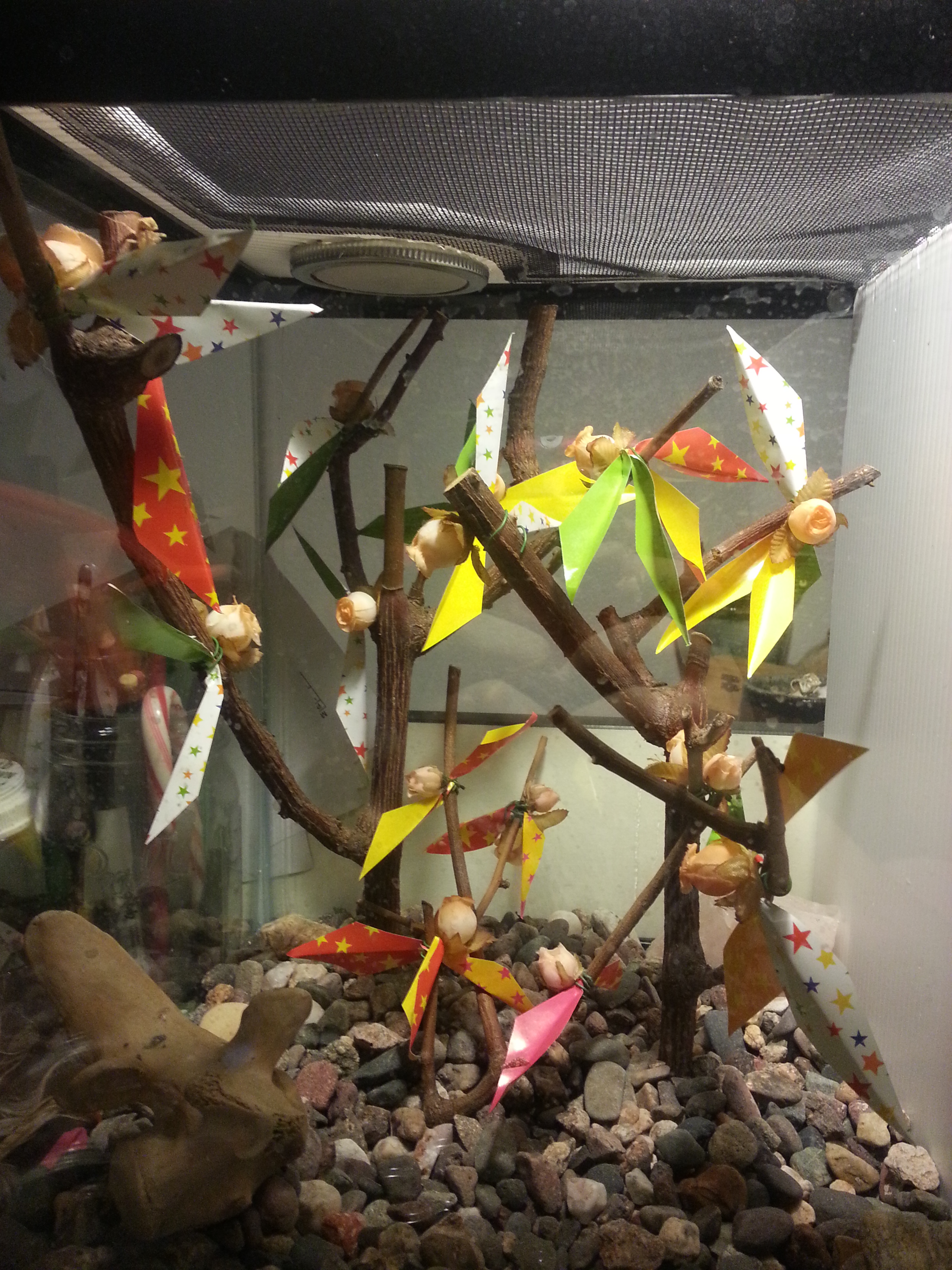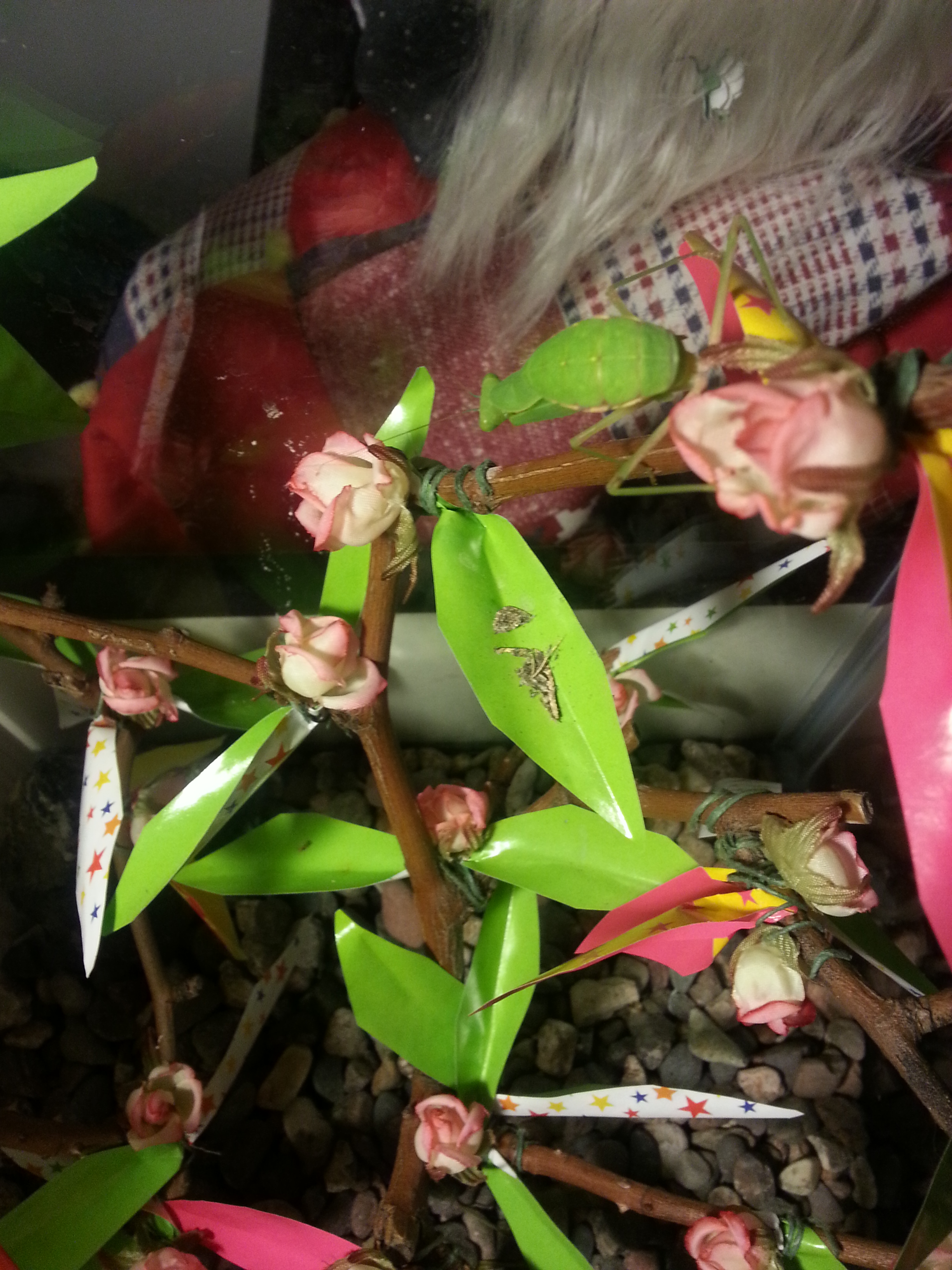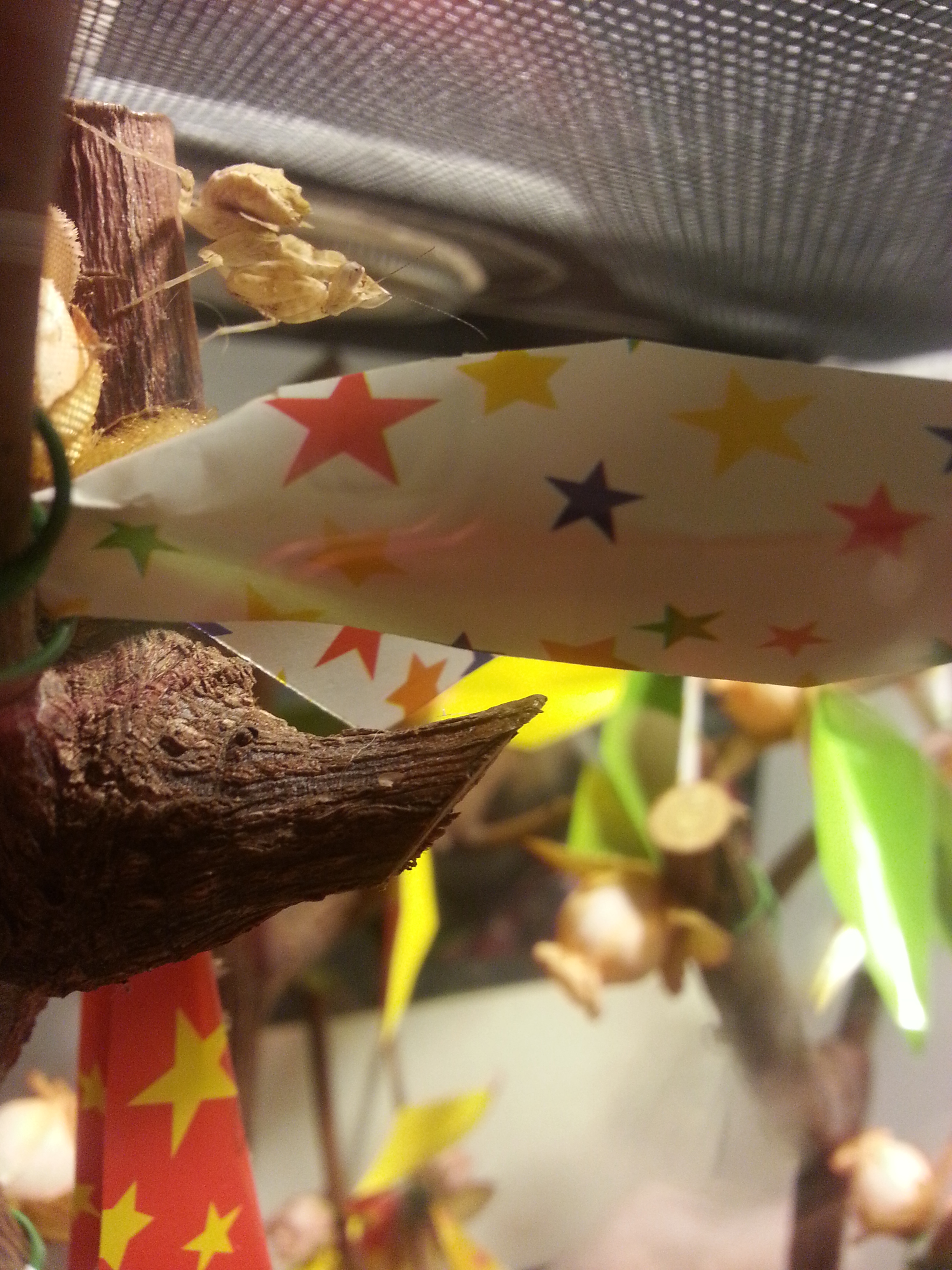Hi folks. I got a decent size aquarium (12 in x 10 in x 20 in) the other day. I considered turning it on its side for a vertical enclosure, but then I realized... Hey... That's a decent size as is... probably enough for 2 mantises... Well, one $10 dollar trip to the hardware store later, that is exactly what I have.
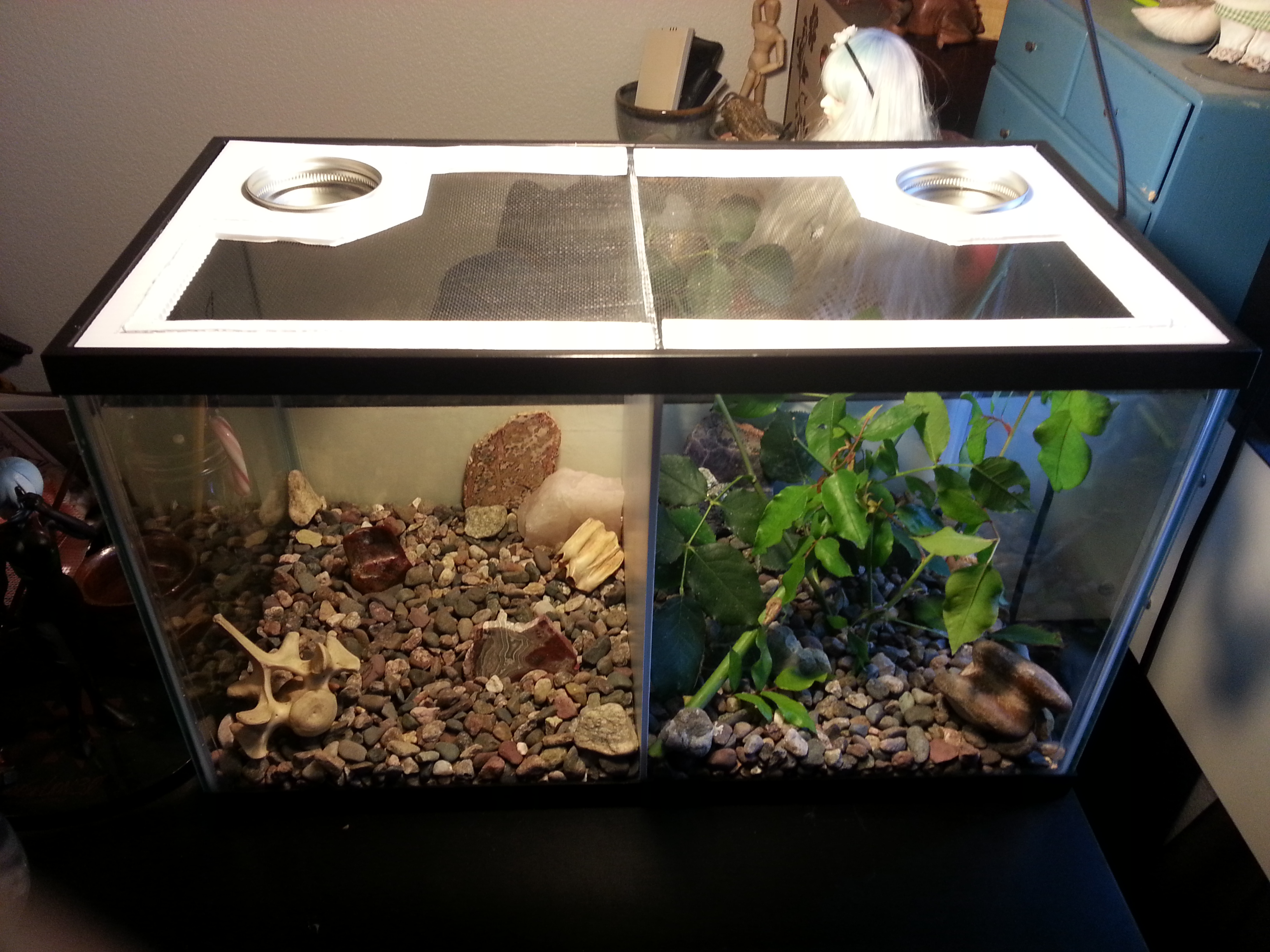
I split it down the middle with a piece of corrugated plastic. Sure would suck if they ate each other.
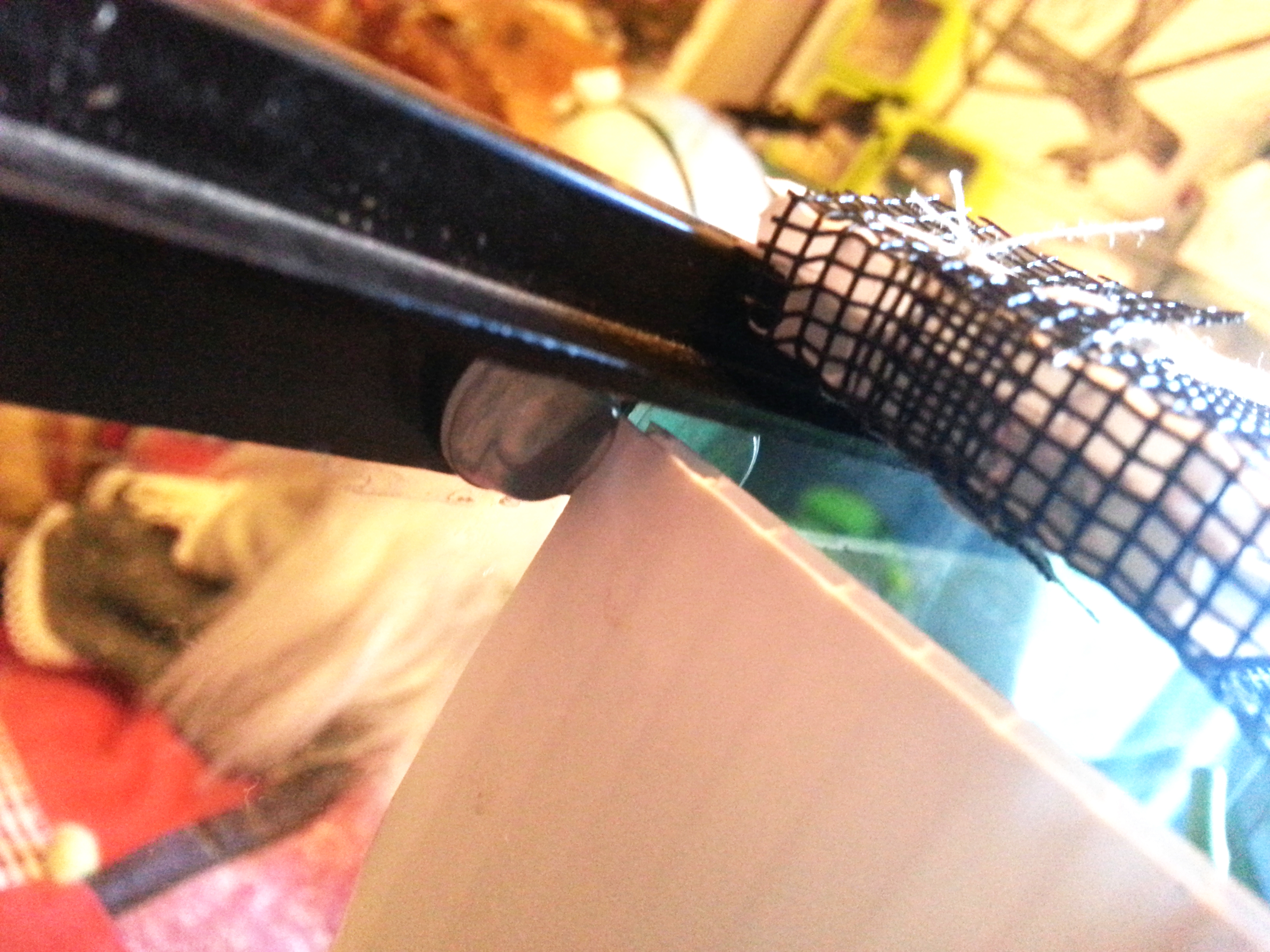
The divider is held in place at the top with some nubs that came with the old enclosure's heating pad, and at the base by the substrate. I avoided anything permanent because I wanted to make it really easy to convert the tank back to its full size. (And we were out of hot glue.)
The lid consists of two U shaped frames made of corrugated plastic, attached to one piece of fiberglass mesh. Each half can be folded over individually to access one part of the tank at a time, or the whole lid can be taken off for cleaning. I've never had good experiences with mesh and glue, so I sewed the mesh on instead.
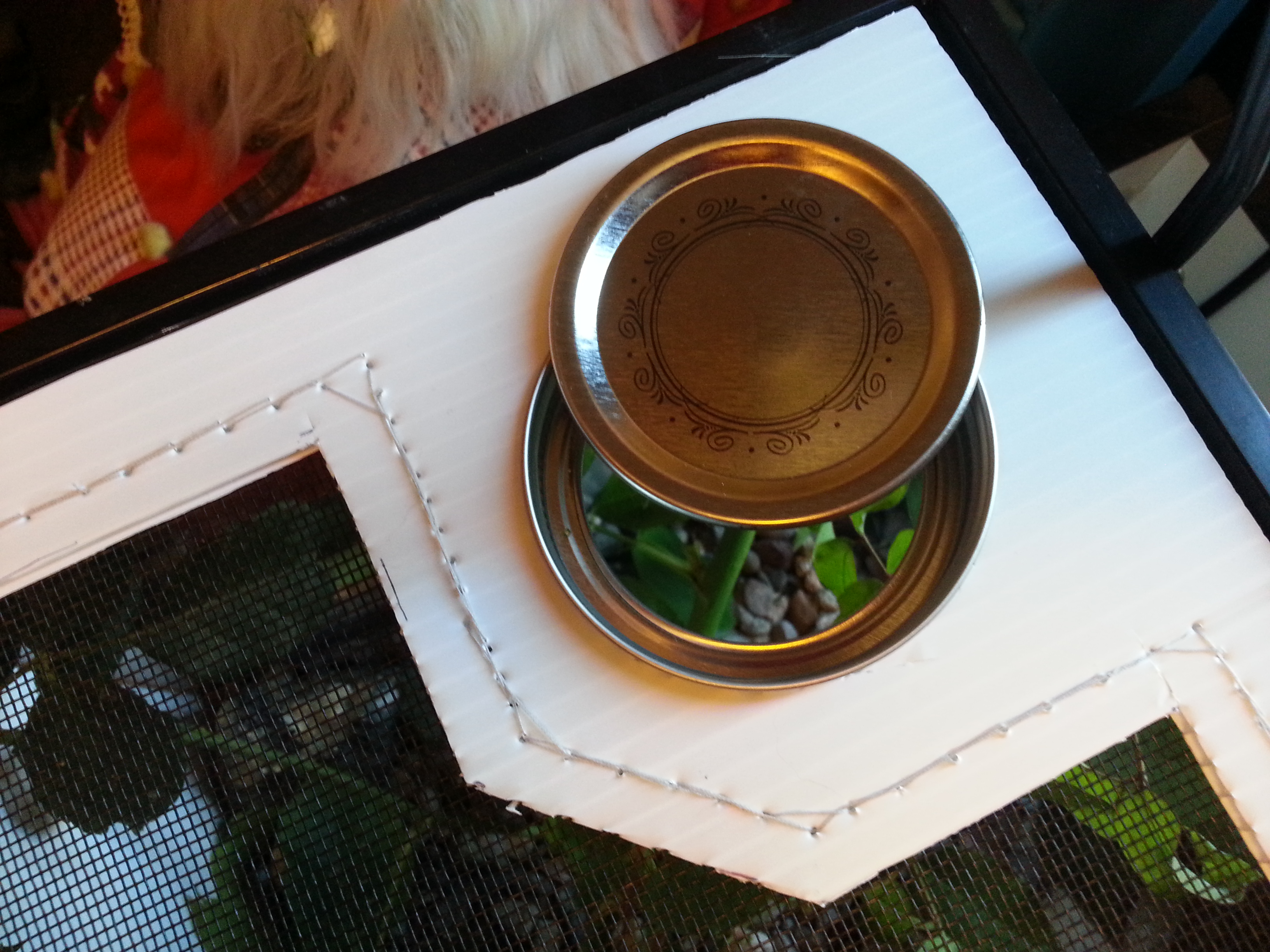
The feeding hole, a mason jar seal pushed into the plastic. When the food hole isn't in use, I throw a jar seal on top.
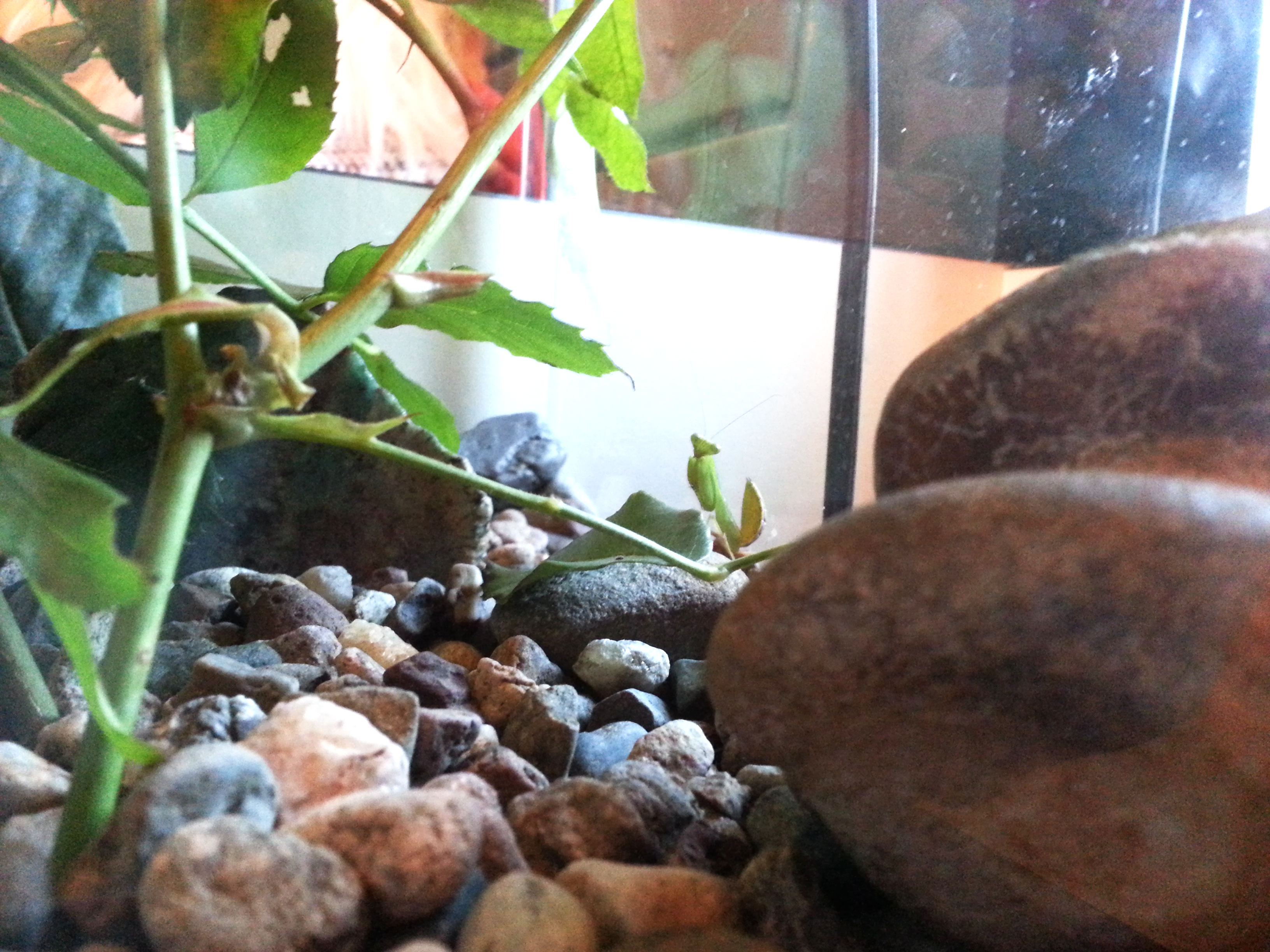
Anyway, here's Truck Reznor, settling down after handily polishing off a hoverfly. No issues finding food in the bigger enclosure, especially if the food has wings.
There's no heating pad yet because it's July and we don't have air conditioning. Mm, toasty!
There are a couple of issues that I may or may not address...
Thanks for reading, and I'd love any feedback.

I split it down the middle with a piece of corrugated plastic. Sure would suck if they ate each other.

The divider is held in place at the top with some nubs that came with the old enclosure's heating pad, and at the base by the substrate. I avoided anything permanent because I wanted to make it really easy to convert the tank back to its full size. (And we were out of hot glue.)
The lid consists of two U shaped frames made of corrugated plastic, attached to one piece of fiberglass mesh. Each half can be folded over individually to access one part of the tank at a time, or the whole lid can be taken off for cleaning. I've never had good experiences with mesh and glue, so I sewed the mesh on instead.

The feeding hole, a mason jar seal pushed into the plastic. When the food hole isn't in use, I throw a jar seal on top.

Anyway, here's Truck Reznor, settling down after handily polishing off a hoverfly. No issues finding food in the bigger enclosure, especially if the food has wings.
There's no heating pad yet because it's July and we don't have air conditioning. Mm, toasty!
There are a couple of issues that I may or may not address...
- There's a couple of small gaps in the divider, at the back and the very top. The chances of a mantis squirting through and going all Donner Party are slim, but I'll be sure to fix it up before I introduce a mantis to the other half.
- The jar lids on the feeding holes are kind of a pain to lift off, and they clatter when half is opened, so I might attach a handle or switch to something else.
- I'm using gravel substrate because I like how it looks and it's really easy to clean and reuse, but I don't see it listed on guides very often. Is there anything wrong with gravel?
- I may look into finding some fake plants.
- I'm new to mantis keeping and I might have missed something. If you see any problems, do let me know.
Thanks for reading, and I'd love any feedback.
Last edited by a moderator:




